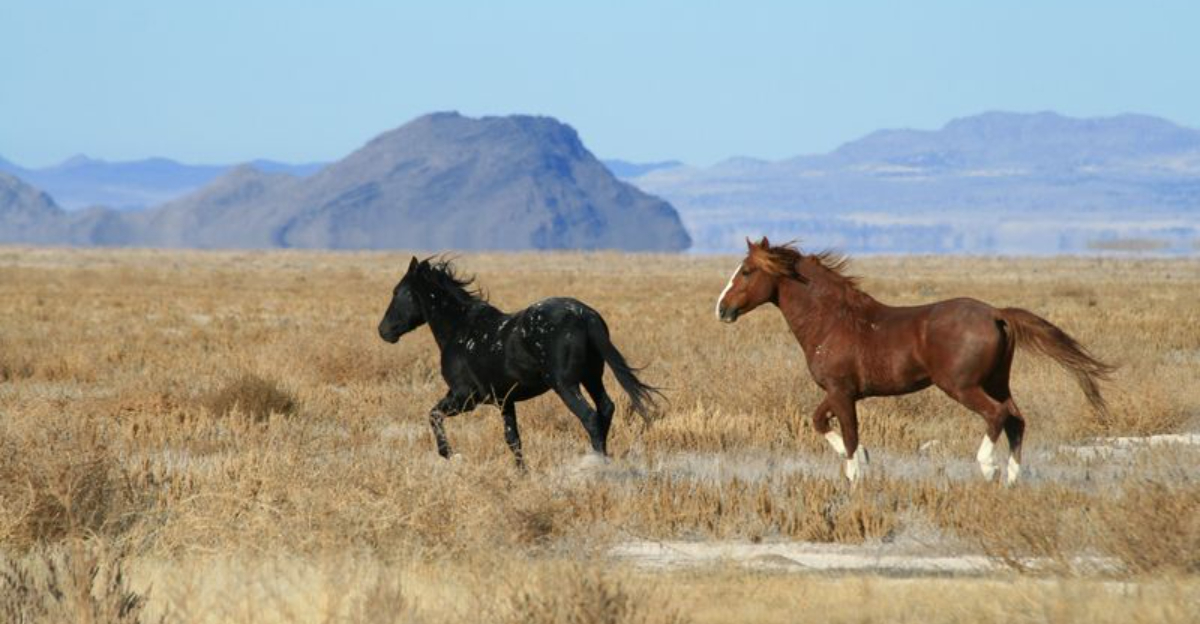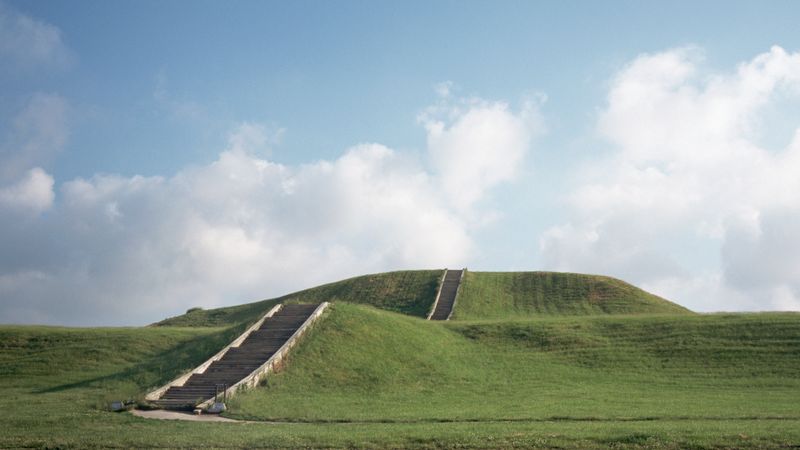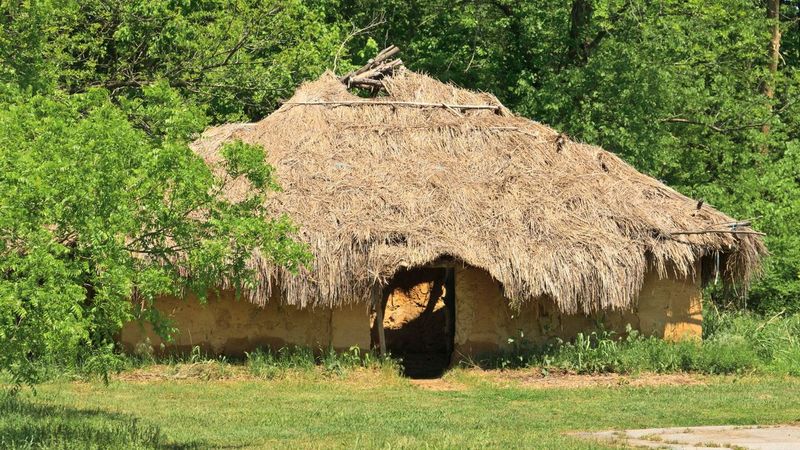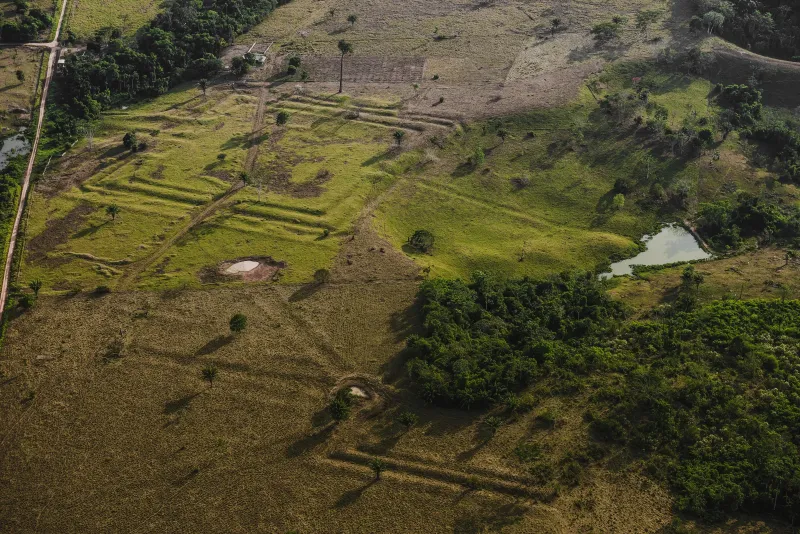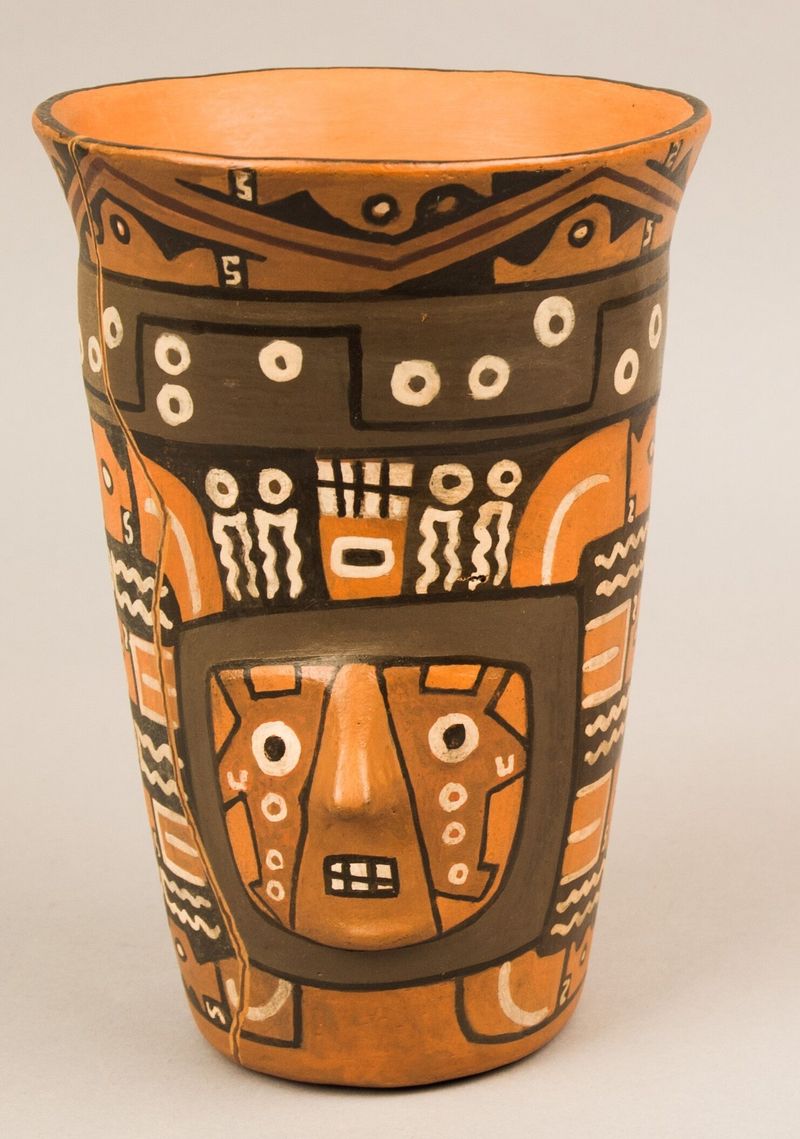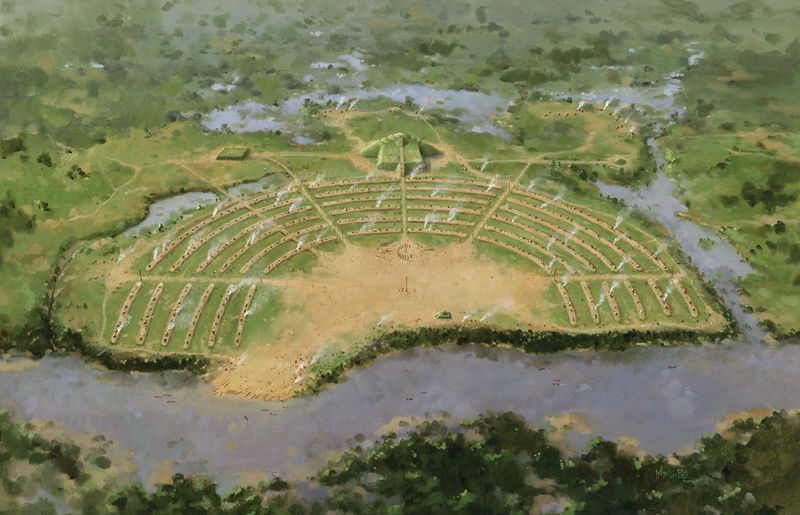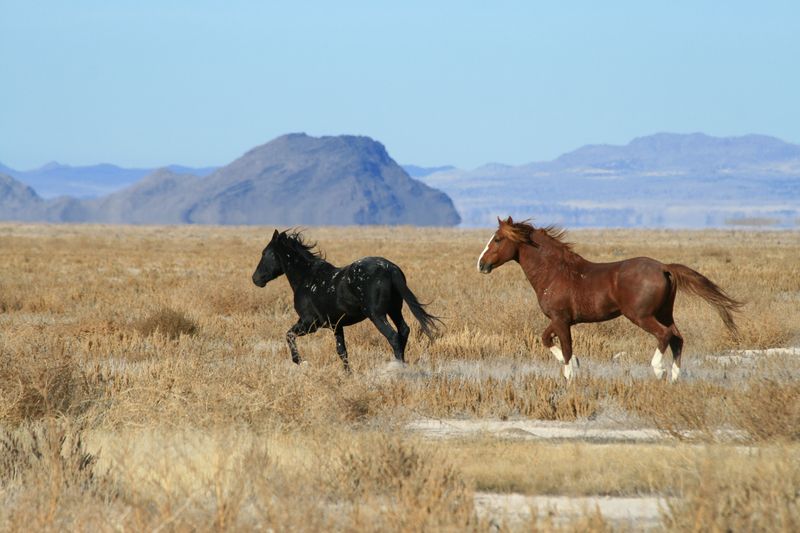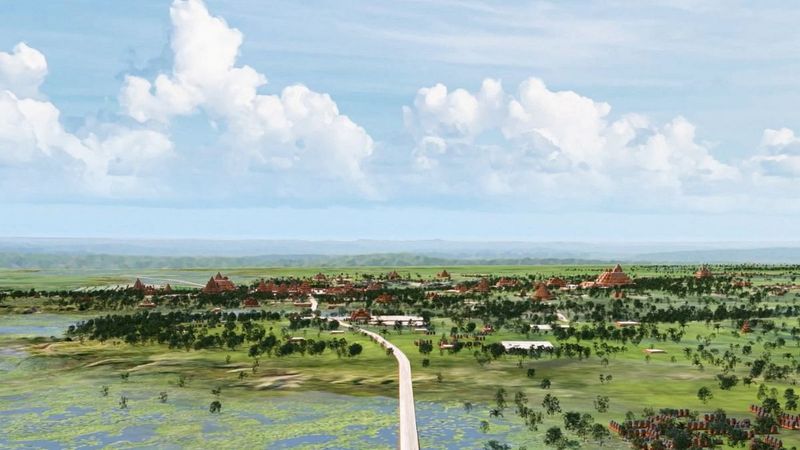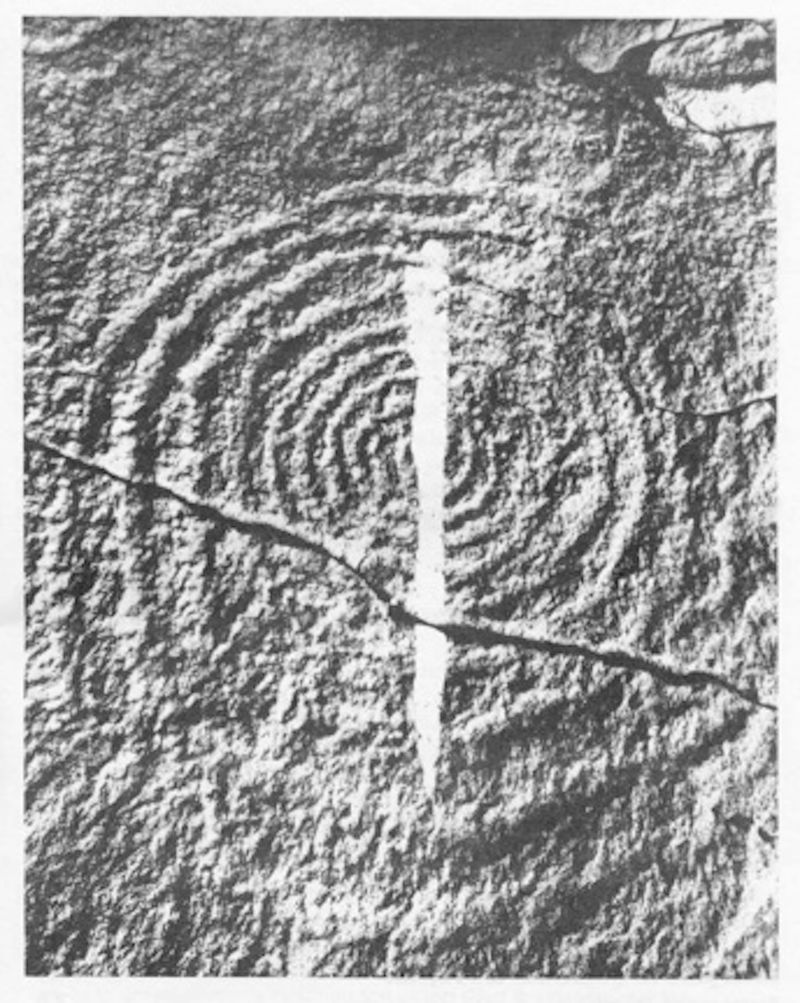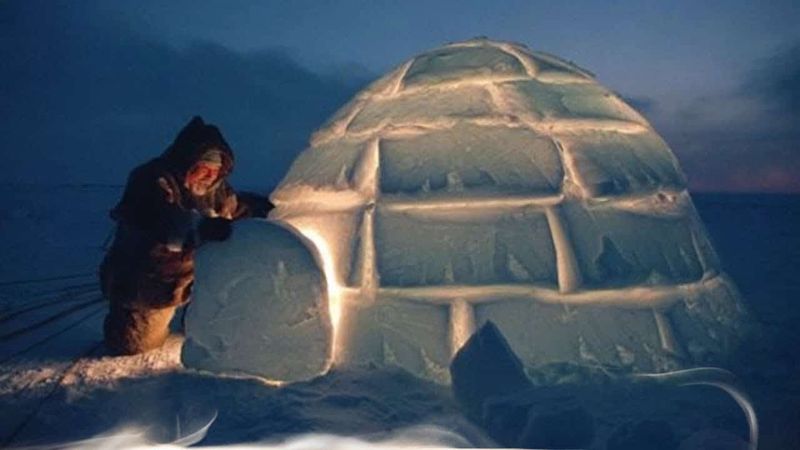Native American societies have long been celebrated for their rich cultures and traditions, but many groundbreaking discoveries have emerged, challenging our understanding of history. These discoveries have revealed advanced technologies, complex societies, and intricate networks that existed long before European contact. This blog post delves into ten remarkable Native American discoveries that have reshaped our historical narrative.
1. Cahokia – North America’s Lost Metropolis (Illinois, USA)
Cahokia, a bustling pre-Columbian city, stunned archaeologists with its sheer size and complexity. Once larger than London, it boasted over 20,000 residents. The city’s mounds and plazas were meticulously designed.
The discovery of Woodhenge, a wooden circle serving as a solar calendar, unveiled their profound astronomical expertise. This celestial alignment demonstrated a deep understanding of solar cycles, proving their sophisticated observation skills.
Such complexity in urban planning and astronomy challenges the notion that advanced civilizations only thrived in the Old World. Cahokia’s thriving trade network further exemplifies its importance in history.
2. The Spiro Mounds & the Mississippian Copper Plates (Oklahoma, USA)
In Oklahoma, the Spiro Mounds have opened a window into a vast trade network that once connected diverse tribes across North America. This site revealed exquisite copper plates, crafted with intricate designs.
These artifacts depicted complex ritual scenes, showcasing the artistic and cultural sophistication of the Mississippian people. They prove extensive trade reaching from the Southeast to the Great Lakes and beyond.
The Spiro Mounds emphasize a forgotten world where different tribes shared resources, art, and ideas. Their reach extended far beyond what was previously imagined, redefining our understanding of pre-Columbian trade.
3. The Amazon’s “Garden Cities” (Brazil/Bolivia)
The Amazon, often viewed as an untouched wilderness, hides ancient secrets beneath its canopy. Recent LiDAR technology has uncovered “garden cities”—complex urban settlements with roads, fields, and plazas.
These findings challenge the myth that the Amazon was devoid of large-scale human activity. The raised fields and intricate layouts illustrate a deep understanding of sustainable agriculture and urban planning.
These ancient cities showcase a civilization that thrived in harmony with nature, transforming our perception of the Amazon’s past. The evidence of a densely populated region contradicts long-held beliefs about its history.
4. The Wari Empire’s Breweries (Peru)
In Peru, the Wari Empire showcased remarkable innovation through its production of chicha, a traditional beer. Their breweries were industrial in scale, predating European factories by centuries.
The evidence points to state-controlled brewing, where beer was used not just for consumption but as a tool for societal cohesion. Chicha played a significant role in rituals and as a labor incentive.
This ancient empire’s brewing practices reveal a complex social structure where alcohol production was integral to governance and community life. The Wari’s approach to brewing was both advanced and influential.
5. Poverty Point – Ancient Earthworks (Louisiana, USA)
Poverty Point, in Louisiana, stands as a testament to ancient engineering marvels. Built over 3,400 years ago, this site consists of mounds and ridges carefully constructed by hunter-gatherers.
Remarkably, this monumental architecture was achieved long before the advent of farming societies, defying traditional timelines of societal development. The complexity and scale of these earthworks show advanced organizational skills.
The existence of such impressive structures without reliance on agriculture reveals the ingenuity of these early inhabitants. Poverty Point redefines our understanding of prehistoric North American societies.
6. The Comanche Empire’s Horse Domination (Great Plains, USA)
With unmatched horsemanship, the Comanche Empire dominated the Great Plains. Their mastery of the horse reshaped trade routes and shifted power dynamics before European settlers arrived.
Comanche riders were known for their ability to outmaneuver rivals and control vast territories. Their equestrian skills allowed them to build a powerful empire, altering the course of history in the American West.
By integrating the horse into their culture, the Comanche transformed into formidable warriors and traders, leaving a lasting impact on the region. Their influence extended far and wide, challenging European expansion.
7. The Maya’s “Superhighways” (Guatemala/Mexico)
Hidden beneath the dense jungles, the Maya’s “superhighways” reveal an intricate network of raised stone roads. These pathways connected major cities, facilitating trade and communication.
The discovery of these roads through LiDAR technology showcases the Maya’s advanced engineering skills and their ability to organize and maintain complex infrastructure. These roads enabled efficient movement of goods and people across vast distances.
This revelation of a sophisticated transportation system challenges previous assumptions about Mayan society and its capabilities. The roads highlight the Maya’s ingenuity and their influence in ancient Mesoamerica.
8. The Ancestral Puebloans’ Chaco Canyon Astronomy (New Mexico, USA)
In the arid landscape of New Mexico, the Ancestral Puebloans built Chaco Canyon, a center of astronomical knowledge. Their architectural designs aligned with celestial events, such as solstices and equinoxes.
The Sun Dagger petroglyph, a unique feature of Chaco Canyon, marks these events with remarkable precision. It demonstrates the Puebloans’ deep understanding of astronomy and their connection to the cosmos.
Chaco Canyon’s significance extends beyond its physical structures, offering insight into the spiritual and scientific pursuits of its inhabitants. It reshapes our view of prehistoric astronomical practices.
9. The Iroquois’ Influence on U.S. Democracy
The Iroquois Confederacy, a sophisticated political entity, significantly shaped the formation of U.S. democracy. Their governance, known as the Great Law of Peace, inspired early American leaders like Benjamin Franklin.
Historical documents reveal that the principles of unity and democracy in the Iroquois system influenced the drafting of foundational U.S. documents. Their council meetings and decision-making processes were models of democratic governance.
The profound impact of the Iroquois on American political thought underscores the importance of Native contributions to modern governance. Their legacy continues to be recognized and appreciated today.
10. The Inuit’s Arctic Engineering (Alaska/Canada)
In the extreme Arctic conditions, the Inuit showcased remarkable engineering skills. They crafted sophisticated tools and structures, such as igloos, tailored clothing, and kayaks, essential for survival.
Their ability to thrive in such a harsh environment without European technology speaks to their ingenuity and adaptability. The igloo, in particular, exemplifies their architectural brilliance, providing warmth and shelter.
The Inuit’s engineering feats were later adopted by explorers venturing into the Arctic, highlighting their innovative approaches. Their contributions continue to inspire and inform our understanding of Arctic survival.
